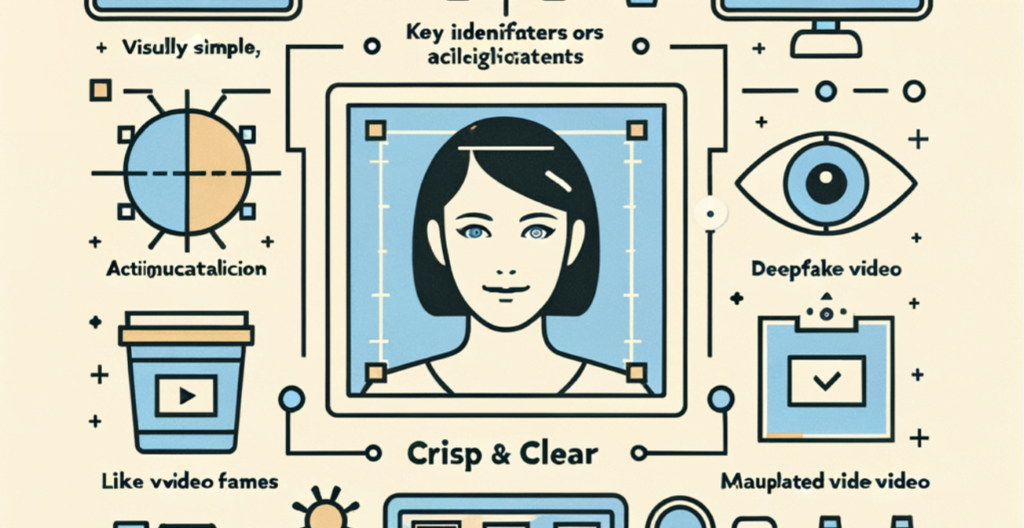In today’s digital age, the line between reality and fiction is becoming increasingly blurred due to the rise of deepfakes. These convincing fake videos are generated using sophisticated artificial intelligence that can make people appear to say or do things they never actually did. For the average person, distinguishing between authentic footage and a deepfake can be daunting. This guide aims to equip you with the knowledge to identify deepfakes and protect yourself from their potential deception.
Introduction to Deepfakes
Deepfakes are the result of artificial intelligence and machine learning algorithms, specifically those known as deep learning networks. These networks can be trained to analyze the facial movements and voices of real people and then replicate them with high accuracy in video content. Originally developed for entertainment and research, this technology has quickly gained notoriety for its misuse in creating fraudulent content.
Understanding the Technology Behind Deepfakes

To identify a deepfake, it helps first to understand how they’re made. Deepfakes are created using a process called “deep learning,” where a computer system learns to replicate a specific task by analyzing vast amounts of data. In the case of deepfakes, the system analyzes countless images and videos of a target person to learn how to mimic their appearance and voice. This process requires substantial computational power and results in a video that can be nearly indistinguishable from real footage to the untrained eye.
Common Characteristics of Deepfake Videos

Despite their sophistication, deepfakes often share some common flaws that can give them away. For example, the person in the video might have an unnatural blink rate or lack of blinking altogether. The lighting or shadows on the face might not match the surroundings, or you might notice unusual artifacts around the hair or ears. The facial expressions might seem off, or the lips might not sync perfectly with the audio. Paying close attention to these details can be your first clue that a video may not be genuine.
Technical Indicators of a Deepfake
There are more technical indicators that can hint at a video being a deepfake. A consistent issue with deepfakes is resolution; the deepfake’s face might be of a noticeably different resolution than the rest of the video. There can also be a lack of consistency in the way the face moves or how it aligns with the head and body. Additionally, compression artifacts, which are distortions in the video, can be more prevalent in deepfake videos due to the process of superimposing the fake content onto the original video.
Behavioral Cues to Identify Deepfakes

Sometimes, the devil is in the details. Behavioral cues can often give away a deepfake. The person’s mannerisms, such as the way they move their hands, the subtleties of their smile, or the timing and cadence of their speech, might not align with what you would expect from the real individual. If you’re familiar with the person being depicted, trust your instincts about any discrepancies in behavior.
The Role of AI in Detecting Deepfakes
Ironically, AI isn’t just the creator of deepfakes; it’s also a tool in detecting them. Researchers have developed AI-driven detection systems that can analyze videos for inconsistencies at a frame-by-frame level, identing anomalies that humans might miss. These systems are continually learning and improving, making them an invaluable asset in the fight against deepfake fraud.
Tools and Resources for Deepfake Detection
For those who are not AI experts, there are tools and resources available to help detect deepfakes. Online platforms and software have been developed to analyze videos and flag potential deepfakes. These tools often use similar AI technology that powers deepfake creation, turning the tables on the fraudsters by using their methods against them.
How to Protect Yourself from Deepfake Deception
Protecting yourself from deepfake deception starts with skepticism. If a video seems controversial or too sensational to be true, research its source and check for verification from reputable news outlets. Be cautious about sharing content until you’re confident of its authenticity. Educating yourself about deepfakes is also protective; understanding the phenomenon helps you stay aware of the potential for deceit.
Reporting and Responding to Deepfakes
If you encounter what you suspect is a deepfake, it’s important to report it to the platform where you found it. Social media sites and content platforms have policies against deceptive practices, including deepfakes, and can take action to remove the content.
Conclusion: Staying Informed and Vigilant
As technology continues to advance, so too will the methods of deception. Deepfakes are a powerful testament to the incredible capabilities of AI but also serve as a warning about its potential for misuse. By staying informed, vigilant, and equipped with the right tools, you can help defend against the wave of digital deception and maintain the integrity of shared content online. Remember, in the age of deepfakes, seeing shouldn’t always be believing.

